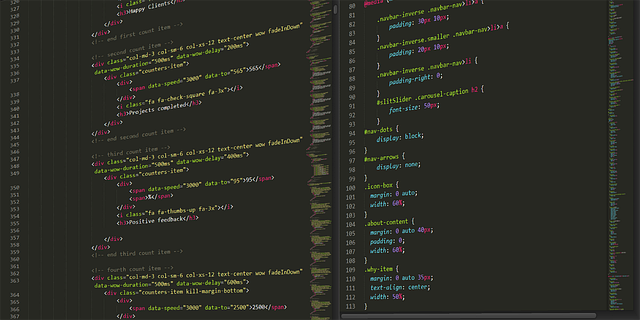What exactly is enterprise application and how does it function? How do businesses from various fields utilize this technology? What are some prominent examples? These thought-provoking questions aim to delve deeply into the concept of enterprise applications, making it an intriguing topic to explore.
The main concern here revolves around the common misunderstanding of enterprise applications and their significance in the business sphere. According to Forrester Research, business executives often neglect the importance of enterprise applications, causing a slowdown in digital transformation and business growth. Moreover, as per the report by Gartner, improper implementation of these applications can lead to operational inefficiency and resource wastage. Thus, it is imperative to outline a proposal advocating the need for comprehensive and correct knowledge about enterprise applications to ensure their optimal utilization.
In this article, you will learn about the comprehensive concept and functioning of enterprise applications. The piece will explore various real-life examples from diverse industries clarifying how businesses use this technology for better efficiency and productivity. It will debunk common misconceptions and elucidate the significant role enterprise applications play in today’s digital world.
Additionally, you will receive a proposal aimed at overcoming the issue of minimal awareness and improper execution of enterprise applications. Throughout the discourse, emphasis will be placed on the importance of proper knowledge and its applicability in successful enterprise application implementation.

Definitions and Understanding of Enterprise Application
An enterprise application is a large software system platform designed to operate in a corporate environment such as business or government. They are complex, distributed, and mission-critical. These applications are typically designed to interface with other enterprise applications used within the organization and can function in both a homogeneous and a heterogeneous environment.
For example, an organizational tool like Slack is an enterprise application. Businesses use Slack to facilitate communication, collaboration, and project management among their employees. Slack is designed to integrate with a variety of other business tools and software, making it a key piece in the network of enterprise applications that keep a business running smoothly.
Breaking New Ground: Understanding Enterprise Application Through Real-World Examples
Enterprise applications are large-scale, complex, and customized software solutions deployed across entire organizations. They integrate diverse functionalities, centralize data from various operational areas, and streamline activities for optimal productivity and efficiency. These applications help enterprises manage their resources better, provide detailed insights for data-driven decision-making, and enhance operational effectiveness.
Business enterprise applications
Microsoft 365 Apps for Enterprise
Enterprise Business apps generator
Key Features and Functions of Enterprise Applications
Enterprise applications typically contain features that encourage collaboration, facilitate data processing, support analytics, and foster intelligent automation. They extend from Customer Relationship Management (CRM) tools, which help businesses track and manage customer interactions, to Supply Chain Management (SCM) applications that monitor and control supply chain activities.
The main functions of enterprise applications include:
- Integrating diverse business processes and promoting seamless data flow.
- Supporting real-time and on-demand access to business information.
- Facilitating inventory management, order processing, and customer service across multiple platforms.
- Offering analytical capabilities for data-driven decision making and forecasting.
- Allowing system customization to cater to specific business needs and sectors.
Real-Life Examples of Enterprise Applications
Several real-world examples highlight the wide-reaching applications and functionalities of enterprise software. For instance, Microsoft Dynamics 365 is a comprehensive suite of enterprise applications with functionalities encompassing CRM, Enterprise Resource Planning (ERP), Human Capital Management (HCM), and more.
Another example is Salesforce, a prominent CRM tool catering to various business needs including sales, service, marketing, and analytics. It centralizes customer data, providing a holistic view of all customer interactions and helping enhance customer experience and satisfaction.
Similarly, Oracle NetSuite is a cloud-based ERP solution offering functionalities from financial management and e-commerce to CRM. NetSuite promotes business visibility, control, and agility by centralizing business data and providing real-time access to key business metrics. These examples attest to the extensive and versatile nature of enterprise applications, enabling organizations to streamline operations, optimize resources, and drive sustained growth.
The Changing Landscape: How the Enterprise Application Revolution is Shaping Businesses
Dissecting the Revolution: What Drives This Change?
Have we ever questioned why business landscapes are transforming so rapidly in recent times? The primary catalyst behind this drastic shift is the Enterprise Application Revolution. In essence, enterprise applications are large-scale software solutions that help companies to run their operations more effectively and efficiently. They cater to a multitude of business needs, including customer relationship management (CRM), enterprise resource planning (ERP), business intelligence (BI), data analytics, inventory management, accounting, and supply chain operations.
Traditionally, most businesses relied on manual procedures and inconsistent software applications to manage their operations. However, these methods fall short in the face of increasing data volume and complexity. They often lead to inefficient workflows, lack of collaboration among teams, poor customer experiences, disjointed decision-making processes, and low productivity due to wasted time and resources.
The Daunting Challenge: Decoding the Problem at its Core
The primary hurdle that businesses face today is the integration and management of diverse information within the organization. In an age where data is considered the new oil, the ability to harness this resource and extrapolate meaningful insights is paramount. Yet, the large volume of data generated from multiple sources often leads to data inconsistency, redundancy, and inaccuracies.
Moreover, sharing and collaborating with this data across different departments can become a logistical nightmare, resulting in siloed operations, miscommunications, and missed business opportunities. Therefore, there’s an urgent need for enterprises to adopt a holistic and integrated approach towards data management that not only reduces complexity but also boosts overall operational efficiency.
Seizing the Opportunity: Adopting the Best Practices
Many leading businesses have successfully navigated this enterprise application revolution by adopting best practice strategies. For example, Salesforce, a renowned CRM platform, effectively manages customer data, allowing businesses to build and nurture customer relationships. ERP systems like SAP help organizations to integrate various business operations into one unified system, fostering collaboration, streamlining workflows, and improving decision-making processes.
Similarly, data analytics tools like Tableau enable businesses to transform raw data into meaningful insights, assisting in informed decision-making. Likewise, inventory management applications such as Zoho Inventory provide real-time inventory tracking, ensuring optimum levels of stock, reducing errors and enabling better supply chain management.
In a nutshell, these applications, when implemented correctly, can significantly transform business operations, making them more streamlined, coherent, and efficient. The enterprise application revolution, with its potential to disrupt traditional business models, heralds a promising future where businesses can effectively leverage technology to drive strategic growth and success.
The Power Unleashed: Success Stories of Companies Utilizing Enterprise Application
Is Your Digital Infrastructure Sustaining Your Firm’s Goals?
Enterprise applications are complex software platforms made to integrate with an organization’s digital infrastructure seamlessly. These applications are typically designed to interface with other enterprise applications used within the organization and support intra-organizational interaction. They move far beyond the standard software capabilities that are geared towards individual users. For instance, tools that offer functionalities such as content management, billing systems, customer relationship management, and others are often classified under enterprise applications. Integrating such tools helps organizations streamline their operations and promote cohesion amongst different sectors.
Addressing the Elephant in the Room
Ironically enough, the same qualities that make enterprise applications indispensable also pose the primary challenge. Their complexity and customizable nature make the implementation of such applications a daunting task. Furthermore, these applications require significant infrastructural investments, which can pose a challenge for small and medium-sized businesses. There’s also the issue of compatibility, both at the hardware and software level, which has to be addressed before successful deployment. In some cases, deploying enterprise applications could necessitate a complete overhaul of an organization’s digital framework.
From Theory to Practice: Successful Implementations
Despite these challenges, several businesses overcame these constraints and successfully leveraged enterprise applications with tangible benefits. One of such businesses is a large multinational bank that implemented a client relationship management tool. This integration was complex due to the bank’s substantial customer base scattered globally, but its successful execution helped the bank track client engagements and provide personalized services more readily. Furthermore, a large retailer successfully implemented an inventory control system across its multinational operations. This implementation allowed the retailer to coordinate its inventory management more effectively, leading to decreased operational costs and increased profits. Another noteworthy example is a healthcare service provider who used a patient management system. The tool helped the healthcare provider significantly streamline scheduling, resulting in improved patient experience and efficient utilization of resources. These cases offer a valuable lesson – embracing these applications, despite the challenges, can yield considerable benefits.
Conclusion
Isn’t it fascinating to consider how significantly enterprise applications have transformed the way businesses operate today? Offering a wide range of solutions to manage complex and voluminous tasks, enterprise applications have become an integral part of how companies manage and streamline their operations and improve efficiency.
We hope you have found this blog enlightening and useful in understanding the complexities and functionalities of enterprise applications. Understanding the nuances not just provides you with knowledge but can also empower you to leverage these applications for potential business opportunities. We invite you to follow our blog, where we frequently discuss topics as this one and many more related to the technologically driven corporate world. By subscribing, you will be kept up-to-date with emerging trends, necessary tools and innovative practices that could very well be the key to your organization’s next big breakthrough.
Stay tuned to our blog for more insightful and engaging content. The world of technology and digital applications is forever evolving. We are excited for future discussions which will explore even more fascinating aspects of enterprise applications. Reflecting upon the examples we have discussed, we are eager to delve further into these and other remarkable technologies that are only a fingertip away in the digital landscape. Until next release, keep exploring, keep learning and watch this space for more.
F.A.Q.
An enterprise application is a large software platform specifically designed to operate in a corporate environment like a business or government organization. These applications are complex, customizable, scalable, and usually mission-critical, assisting in facilitating the operations of the enterprise.
2. Can you provide some examples of Enterprise Applications?
Yes, popular examples of enterprise applications include Enterprise Resource Planning (ERP) systems like SAP, Customer Relationship Management (CRM) systems such as Salesforce, and Supply Chain Management (SCM) systems. Another example is Microsoft’s SharePoint, which is used for collaboration and document management in many companies.
3. How do Enterprise Applications help in the overall growth of an enterprise?
Enterprise Applications assist in enhancing the productivity of operations, improving efficiency, and reducing errors within an organization. They enable seamless flow of information, streamline business processes, and facilitate decision-making, thus directly contributing to the organization’s growth.
4. What are the core features of an Enterprise Application?
The core features of an enterprise application include flexibility, scalability, and robustness. These systems must be able to integrate with existing systems, expand to accommodate growth or increased demand, and be resilient enough to handle large volumes of transactions or data effectively.
5. Are Enterprise Applications suitable for small businesses?
Yes, there are enterprise applications designed to fit the needs and budgets of small businesses. It is important for a business, regardless of size, to choose an enterprise application that is scalable, so it can grow and evolve with the business.



